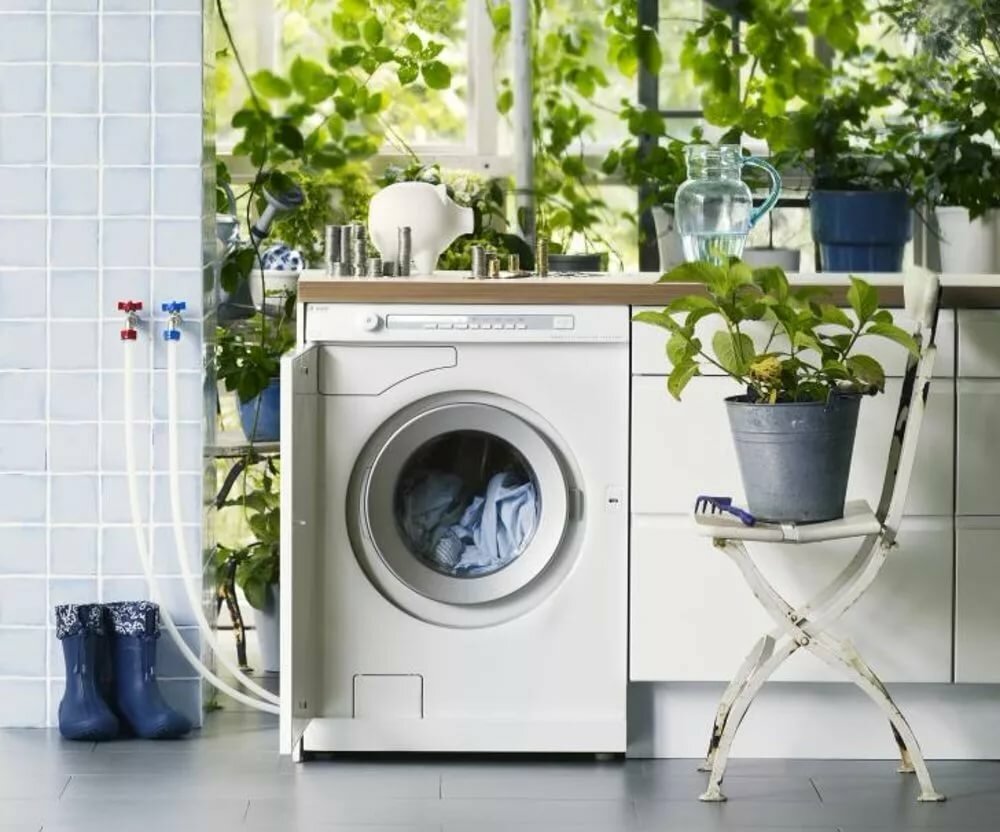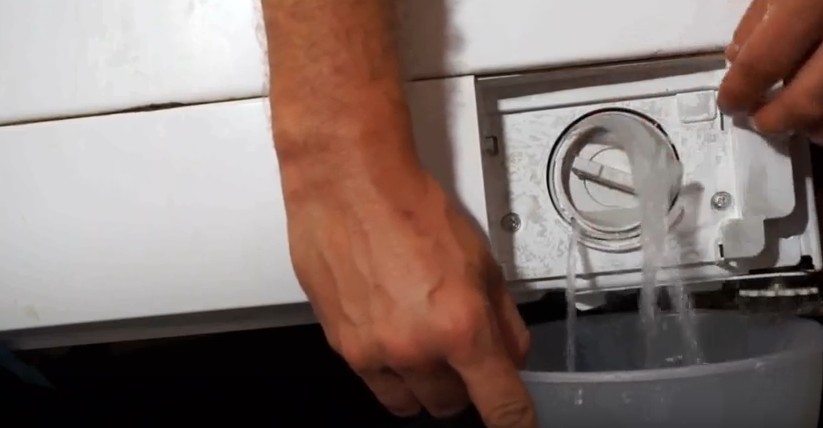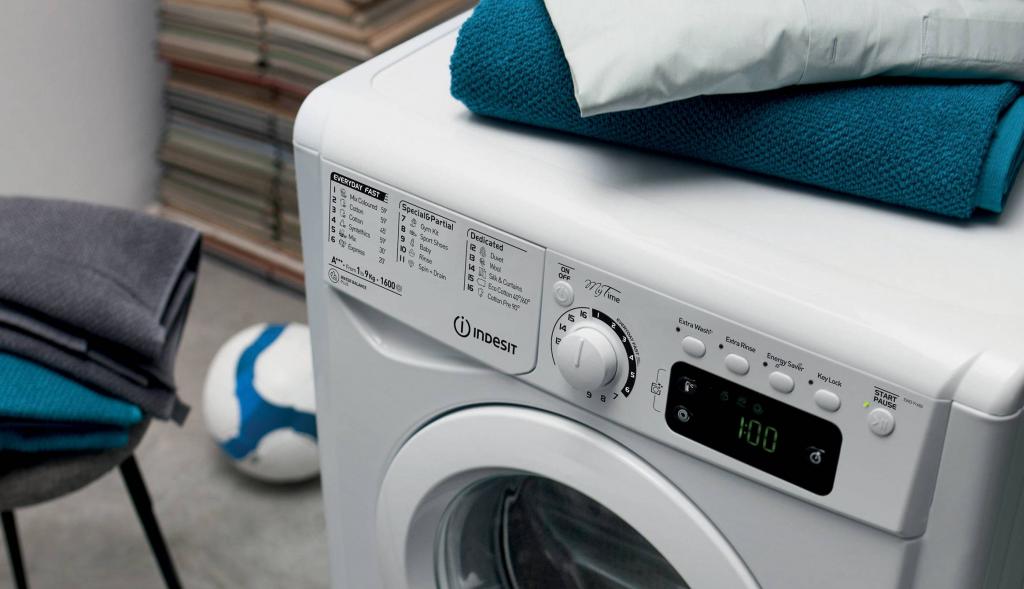Draining the washing machine
In most cases, stopping the wash before the end of the program cycle does not bode well. However, before proceeding to find out the causes of the problem and eliminate possible problems, you need to deal with the first of them - a full tank of water.

For many people, this task, how to drain the water from the washing machine, can really be too tough. Although, in fact, you can cope with it alone. The main thing is to know how!

When is it needed
Problems need to be addressed as they arise. The failure of the washing machine itself is unpleasant, but it should be understood that any equipment breaks down: both the old Korean Samsung and the new Italian Indesite. If an error code does not appear on the scoreboard (or on the indicator), then there is a chance that everything will be able to be corrected on its own.

Usually, forced draining is not required during normal operation. However, situations are different, for example, power outages, while the laundry is almost washed. Although, in fairness, it should be noted that in most cases this is still associated with some kind of malfunction.

Note! In addition to technical breakdowns, there is also such a thing as a human factor, which can manifest itself, for example, in a mistake when choosing a program. Unlikely, but still ...
How to forcibly drain the washing machine
First of all, you should try to restart the program. In addition, more recently, modern machines have been equipped with an additional option for forced draining, so the first thing to do is to use it. If all else fails, then it is worth preparing to manually drain the water: disconnect the machine from the power supply and turn off the water.

It must be borne in mind that most often this procedure is accompanied by the ingress of a significant amount of liquid on the floor. Therefore, it is advisable to find a basin, rags in advance and clear the space next to the machine so that nothing interferes with dealing with the problem.

Using the drain hose
Since the washing machine has broken down, draining the water in this way will be the best option. To do this, you need to release the hose from the retaining clamps and put it on the floor - it should go by gravity. If this happens, the end of the hose must be quickly put into the bowl, and then wait until the drum is empty.

Important! Recently, many manufacturers began to place the drain hose according to a special fastening scheme that prevents accidental water escape during washing - the so-called protective loop. It is located inside the body, as a result of which such a drain option will be impossible.

Using a drain filter
In this case, the water can be drained through the snail of the drain filter. Before unscrewing the lid, it is recommended to slightly raise the edge of the machine where the hole is located and slide a basin or bowl with low sides under it. In order not to keep the machine suspended, it is allowed to lean it against the wall. When the filter cover slides out of place, the water rushes down.

Drainage in the washing machine via the emergency hose
This hose is not available on all models. But if it is, it greatly simplifies the task. It is usually located under the decorative cover, next to the neck where the drain filter is installed.
To remove water, you need to pull out the emergency hose as far as possible, remove the protective cap and direct the free end into the container. It may take a while for the water to drain completely.

How to drain the washing machine directly
If no other method has helped, the solution remains "head-on" - to open the door. It is clear that a significant amount of water will spill onto the floor, so it is necessary to prepare in advance and quickly neutralize it.
To reduce spillage, it makes sense to tilt the machine back so that the front panel is at an angle to the floor surface. After opening the door, you need to scoop out the water with a small mug or small ladle. In this case, it will not be possible to completely remove it.

Through the drain pipe
The most time consuming method and may not suit everyone. Since it was not possible to drain the water from the washing machine in other ways, this option suggests dismantling the back panel in order to get to the drain pipe from the drum to the pump. After it is possible to organize access to the nozzle, it must be removed from the pump side.

Forced draining in the washing machine: causes of trouble
Among the most common breakdowns that lead to refusal to drain water, the following can be noted:
- Drainage plug. This can be a blockage of both the filter and the branch pipe of the drain hose at the point of connection to the sewer.
- Breakdown of the drain pump. Partially stems from the first paragraph, but can be caused for other reasons.
- Defective sensors. Automatic refusal to drain water in case of failure of the level or pressure sensor.
- Malfunctions in the control unit. The most "unpleasant" type of malfunctions, as it requires replacement of the electronic board, which is not always available.
Serviceable automatic machine: proper care
In order not to puzzle over how to drain the water in the future, and the washing machine does not break down, you should adhere to a few simple rules:
- Cleaning clothes from debris, especially pockets.
- After washing down jackets, furs or pillows, it is imperative to check the drain filter.
- Try to keep small objects out of the way, such as curtain hooks.
- Clean the drum, powder tray and rubber seal on the doors regularly.
- Perform preventive treatment with an anti-scale agent.
Of course, any malfunction is unpleasant.However, with sufficient skills, you can reduce the number of problems to a minimum, leaving specialists with what they really cannot cope with. Therefore, knowing how to drain the water from the washing machine will come in handy not only in order to get the "stuck" laundry, but also allow you to look for the cause of the problem, which may well turn out to be trifling.

Video: how to drain water from a washing machine

















